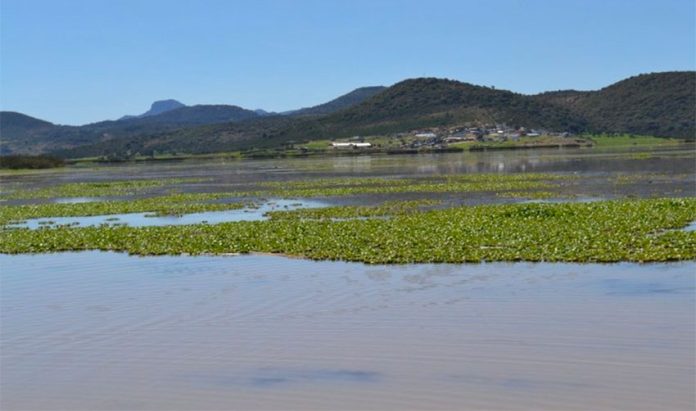The capacity of Hidalgo’s Tecocomulco Lake to store water has been drastically reduced by the invasion of two aquatic plants and the accumulation of mud on its bed, says the state chief of the National Water Commission (Conagua).
Armando Hernández Mendoza told the newspaper La Jornada that the 1,679-hectare lake, located southeast of the state capital Pachuca, is at risk of drying up because of the proliferation of tule – a species of the plant family commonly known as sedges – and water lilies as well as the large amount of mud on its bed.
He said that the lake has become more like a flat plate than a bowl, with water depths of just 60-70 centimeters. Hernández explained that Tecocomulco Lake depends on subsurface flows from the north of Puebla and that if there are no new flows soon “it could dry up.”
Jaime Martínez Parras, chief of the Tecocomulco Lake Basin Commission, said that the proliferation of tule and water lilies – the two plants now cover more than 70% of the lake’s surface – also pose a threat to a range of wildlife, explaining that large numbers of axolotls (Mexican salamanders), Montezuma leopard frogs and charales, a native species of silverside fish, have died.
He explained that the water that flows into the lake originates in areas where cattle are raised and crops are grown and as a result brings with it large quantities of nutrients that allow the two aquatic plants to proliferate. Cutting and disposing of the tule and lilies is only a temporary solution, Martínez said.
Both he and Hernández believe that the lake, which attracts migratory birds and is designated as a wetland of international importance under the Ramsar Convention, will cease to exist as a water body within 60 years.
Another lake in Hidalgo that currently has much less water than it should have is the Laguna de Metztitlán, which has lost 95% of its water due to drought and seepage.
Some 200 to 300 liters of water per second continue to flow into the lake, a key source of water for agriculture, but greater quantities of water are lost due to percolation, or seepage.
Source: La Jornada (sp)
